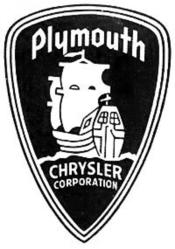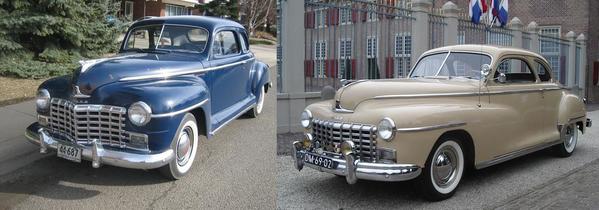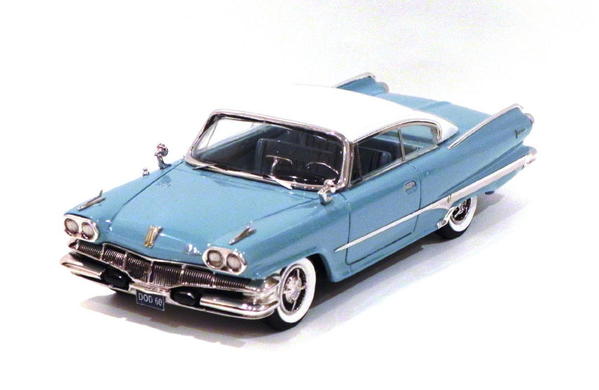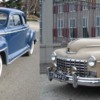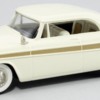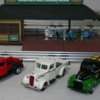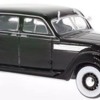The Chrysler Corp was Founded in 1925 By Walter Chrysler from the remains of the Maxwell Motor Co. Chrysler was marketing cars in the mid to upper middle price ranges. In 1928 Chrysler rebranded their 4 cylinder Chryslers as Plymouths and entered into the low priced market dominated by Ford and Chevrolet. They were slightly higher priced but were more advanced with hydraulic breaks and other features. Chrysler also introduced the DeSoto later that year.
In 1929 Chrysler acquired Dodge Bros. in 1929 and reorganized their marketing strategy. Dodges and DeSotos were larger and more expensive than Plymouths. As a result Plymouths were sold by all Chrysler, DeSoto and Dodge dealers, giving the dealers low priced cars to sell. Canadian marketing was different, Canadian Dodge dealers had a lower priced Dodge to sell, it was essentially a Plymouth with Dodge trim. Plymouth and Dodges were stodgy family car not unlike Chevys or Pontiacs. This all changed in 1955 with the introduction of Exner styling plus new lighter V8 engines, Dodge was using a small version of Chryslers Hemi for 2 years before. Plymouth started marketing performance models starting in 1956 with the Fury and Concluded with the Hemi ‘Cuda.
The end for Plymouth started with the 1960 Dodge Dart. This was a Plymouth with Dodge styling including sheet metal. Dodge sales increased while Plymouth sales shrank. The new Valiant was a unique marqe for 1960 not a Plymouth, and it also took sales from then and was rebranded as a Plymouth the next year. From then on Dodge competed directly against Plymouth gradually siphoning of sales until Plymouth was no longer a sustainable marque. The last Plymouth built was in 2001 and some Plymouth models were rebranded Chryslers
On the Left a Canadian Built '48 Dodge based on a Plymouth.
On the Right an American '48 Dodge
1935 Plymouth Coupe by Brooklin
1956 Plymouth Fury by Brooklin
This was Plymouth first performance car.
1960 Plymouth Fury by American Excellence / NEO
1960 Dodge Dart by Madison
1960 Dodge Polara by American Excellence / NEO
This car was in Dodge’s traditional size and price range.
1960 Valiant by White Box
This was the only year Valiant was marketed in the U.S. as a separate make.
In 1962 American Dodge Dealers had the Lancer version of the Valiant
CLICK HERE for last weeks Chronicle.





